Top 26 best varieties of beans with photos and descriptions: what varieties they are and how to choose the right one
The legume family has been actively cultivated for several millennia. More than 20,000 varietal varieties have been bred, adapted to different growing conditions and individual preferences.
This article discusses only a few of them that are relevant in recent times and attract the attention of gardeners for their differences from other varieties.
The content of the article
- Classification of varieties
- Bean varieties for cultivation in different regions
- Bean varieties of different types: photo, name and description
- Kentucky Blue Pole American Asparagus Beans
- Green Beans Blue Lake
- Golden nectar
- Purple Queen Beans
- Description and photo of Mascotte asparagus beans
- Oil king
- Yellow asparagus bean variety Sweet Courage
- Green asparagus beans Laura
- Sachs 615
- Bona's asparagus beans
- Crane
- Vigna Liana green beans
- Vigna Countess
- Photo and description of the variety of green beans Vigna Macaretti
- Asparagus Yardlong Classic Wign Bean
- Dolichos (hyacinth bean, curly lilac)
- Fire Red Curly Beans (Turkish Beans, Winner)
- Curly beans Spanish white
- Bluhilda: Vegetable Curly Beans
- Curly beans Harmony
- Curly beans Violet
- Green Giant Curly Beans
- Enchantress - black beans inside white pods
- Curly beans Borlotto
- Flamingo: A variety of green beans with variegated beans
- Conclusion
Classification of varieties
In the modern classification of varieties, several species of the legume family are considered to be beans. Due to the variety of plants, they are classified according to:
- type of fruit - shelling (grain), asparagus (sugar) and semi-sugar;
- the size of the seeds - large, medium, small-seeded;
- in terms of ripening beans - early, mid or late ripening;
- by designation - food, feed, green manure;
- for resistance to diseases and pests.
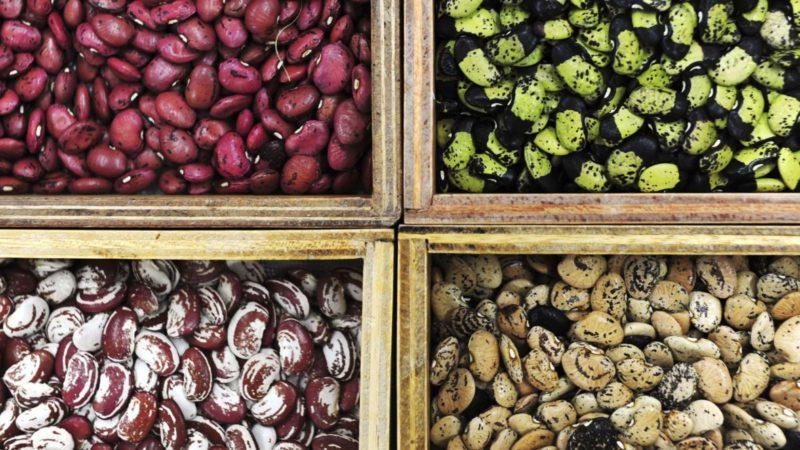 By structure, plants are divided into:
By structure, plants are divided into:
- Shrub (weaving) - compact low plants up to 60 cm high do not need a garter. They better tolerate severe weather conditions, ripen faster, are more often in demand in the fields, are convenient for home and greenhouse. There are vegetable, grain and decorative ones.
- Curly - plants up to 7 m in length, they must be pinched, not allowing them to grow in long lashes. The beds require strong supports. They have a long growing season. There are also vegetable, grain and decorative varieties.
- Semi-climbing - varieties of curly beans up to 2 m long.
Decorative form
Each of the varieties of beans becomes a decoration of the site, but there are those that are bred specifically for this purpose. They are annual and perennial, climbing and bush, characterized by a long period of abundant flowering, some do not even bear fruit.
This variety is used for vertical gardening, arranging pyramids on lawns and as green manure. It protects against late blight, and fertilizes the soil with its green mass.
reference... Yields of potatoes planted next to it almost doubled.
Vegetable and grain beans
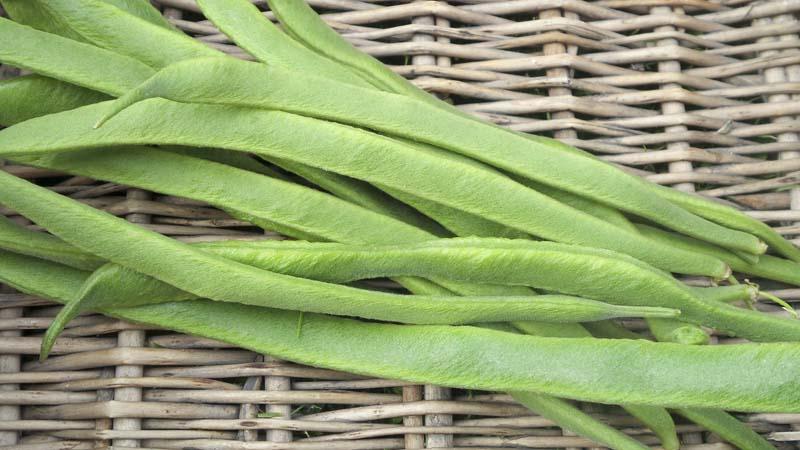
Vegetable beans include sugar and universal semi-sugar beans, horse beans and edible cowpea varieties.
Semi-sugar grain beans differ from the usual shelling beans in that in their pods (shoulder blades) in the phase of milky ripeness there are no parchment partitions and coarse fibers.
The pods begin to be eaten green, and when fully ripe, full-fledged beans are husked. To keep the pods tender and soft, they are cut off at least once every 2-3 days.Otherwise, the shutters become coarse and inedible.
Vigna (Latin Vigna) is another versatile genus of legumes that stands out for its characteristics. Up to 5 kg of green pods are removed from one plant, reaching 100 cm in length, tender and crunchy.
The culture comes from tropical forests, it is more thermophilic than beans, its optimal growth temperature is 25-35 degrees. On the other hand, it adapts to any type of developed soil that provides good rooting. Grows on sandy and clayey, with a wide pH range, including very acidic (pH 4) and strongly alkaline.
It does not tolerate drying out, and excessive moisture reduces growth and favors infection with fungal diseases.
When fully ripe, grains are formed in the cowpea pods. They are smaller than regular beans and are often referred to as peas or lentils. The most famous varieties used in food are: adzuki, anko, mung, mung, urd, etc.
Attention! The fruits of sugar and semi-sugar varieties of common beans must be cooked. Green cowpea pods can be eaten raw.
Sugar (asparagus)
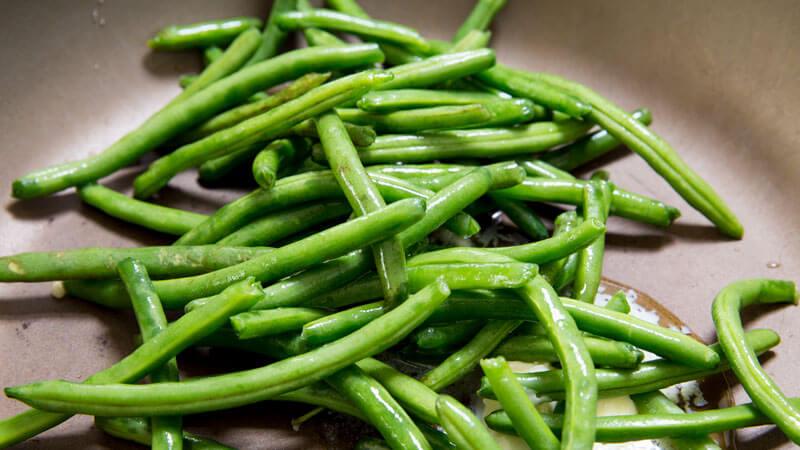
Sugar bean pods with small grains are used for food, which are harvested 7-10 days after the ovaries, cooked, canned and frozen.
Not all varieties of asparagus beans retain their tenderness when overripe. Therefore, they regularly cut off from the plant immediately after reaching technical maturity, providing optimal taste and stimulating fruiting.
There are early-, mid- and late-ripening varieties; all types are planted in warm climatic zones in order to harvest the whole season.
Common varieties of asparagus beans: Saksa 615, Bona, Blue Lake, Nota.
Read also:
As in cooking, cosmetology and folk medicine, use black beans.
How and when to plant red beans for a better harvest.
Step-by-step instructions on how to grow beans at home and on site.
Shrub asparagus varieties
This type of bean is recognized for its short ripening times.
Reference. Some varieties of bush asparagus beans reach technical maturity already 35 days after planting in the ground.
Plants require more space in the garden, but they give a constant harvest, which is harvested every 3-4 days from the beginning of fruiting until the onset of cold weather.
Curly sugar varieties
They differ from bush by a longer ripening period. Mid-season varieties prevail. In cool climates, seedlings are preferred.
Grain species
Shelling (grain) beans used to be called French beans, since it was French chefs who were the first in Europe to appreciate their taste and began to widely use it in cooking.
Only grains are eaten in shelling beans, the pods of these varieties are too tough and inedible.
reference... Bean pods are widely used in folk medicine.
Large beans
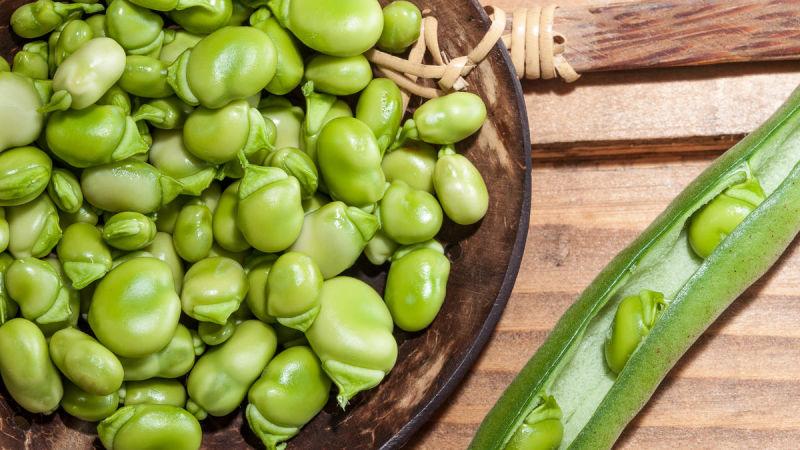
This kind of beans was cultivated in ancient Greece, and in ancient Egypt it was revered as sacred. It has been cultivated for so long that it is no longer found in the wild.
Some varieties of this genus are called Lima or Lunar beans (Latin Phaseolus lunatus), others are referred to Garden or Horse beans (Latin Vícia fába).
Soviet breeders have bred many varieties of this kind of beans under the general name Russian beans. They are resistant to frost and unpretentious to different types of soil.
Bean varieties for cultivation in different regions
Thanks to the constant work of breeders, new varieties are developed that are adapted to different climatic conditions, soil characteristics, waterlogging or dry weather, various types of diseases and pests.
How to choose a variety for your region
The main selection criteria:
- the duration of the period during which the temperature is comfortable for the growth of beans;
- a place allocated for beans;
- soil or climatic regional conditions conducive to the emergence of pests and contributing to the development of diseases.
Bean varieties of different types: photo, name and description
When buying seeds, there is confusion in the description, often semi-sugar and grain varieties are called asparagus.
For ease of defining a varietal variety, it is enough to remember that asparagus beans were named because of the similarity of their pods to asparagus stalks.
Asparagus beans come in different colors: classic green, yellow and purple, evenly distributed throughout the pod, without streaks and spots. The shape of the pod is even cylindrical, the thickness does not exceed 1 cm, the valves are fleshy, rounded, through their pulp the grains are not visible.
Kentucky Blue Pole American Asparagus Beans
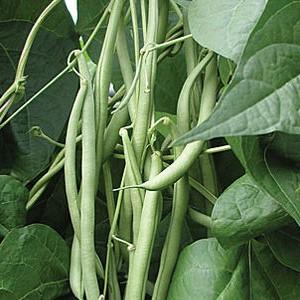
Semi-poppy sugar bean variety bred by Calvin Lambert, an Idaho breeder, from Blue Lake and Kentucky Wonder varieties.
The pods of this variety have all the qualities inherent in asparagus beans.
They are smooth, cylindrical in shape, dark green in color with small white grains, 15-18 cm in length, sweet and delicate in taste.
The plant begins to bear fruit 65-70 days after mass germination. Sensitive to soil quality, prefers slightly alkaline, well-drained soils.
Green Beans Blue Lake
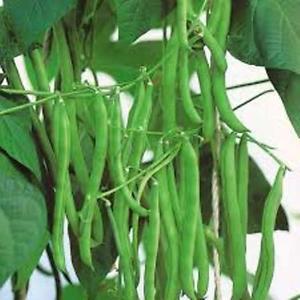
The cultivar is almost identical to the Kentucky Blue Pole, differing only in the beginning of fruiting.
The pods appear a week earlier and have a cylindrical shape. Dark green, 15-16 cm long, fleshy and smooth, remains soft even when fully ripe.
Golden nectar
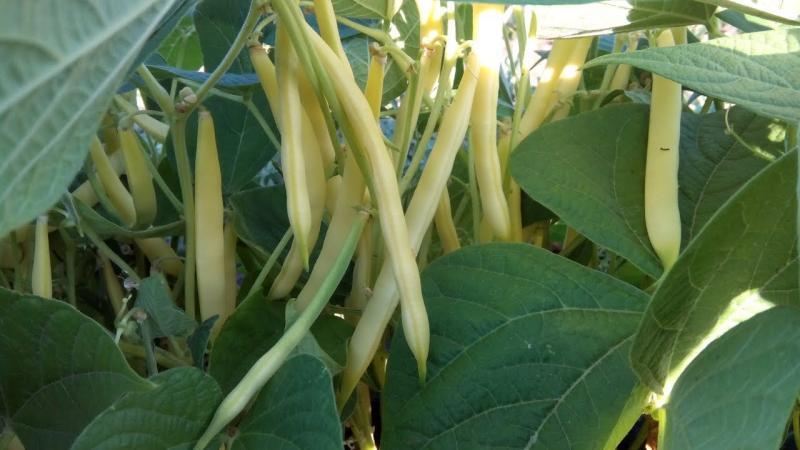
Curly variety of common sugar beans with a bush length of 1.5-3 m. Planting in open ground when the soil warms up to 12-15 degrees, seedlings are sensitive to frost.
Technical maturity occurs in 65-70 days. Pods are yellow-gold up to 25 cm long, white grains. As with previous varieties, the pods remain soft even when fully ripe.
The variety is resistant to bacterial diseases and anthracnose.
Purple Queen Beans
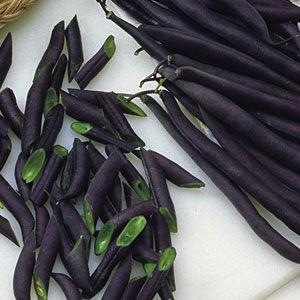
A bush variety of sugar beans with an ordinary height of 50-60 cm. Seedlings appear in 8-14 days.
The leaves are dark green, the flowers are pale purple.
It stands out with glossy pods of rich purple color, 15-18 cm long, bright green inside.
Harvested 41-50 days after planting.
Description and photo of Mascotte asparagus beans

A bush variety of sugar asparagus beans, plants with a height of 40-45 cm. Seedlings - for 8-14 days depending on weather conditions. The optimum temperature for growth is 21-32 degrees, landing at 15 degrees.
Fruiting begins in 50-55 days, the pods are cylindrical, slightly curved, green, 12-15 cm long. Technical ripeness at 51-56 days, the taste is delicate and juicy.
They reach full maturity 80 days after germination. With an average rainfall of less than 25 mm per week, it requires regular watering.
Oil king
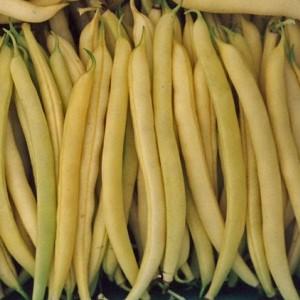
A bush variety of common sugar beans. Differs in rapid maturation and compactness of a bush up to 40 cm high.
Fruiting in 50 days, technical ripeness at 51-56 days.
Round pods up to 20-25 cm long, golden yellow in color, quickly overripe and become tough.
The seeds inside the pods are larger than those of other varieties.
Yellow asparagus bean variety Sweet Courage
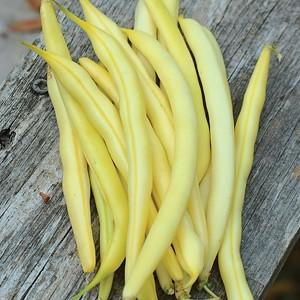
Bush variety of common sugar beans, up to 40 cm high, white flowers. The pods are cylindrical, slightly curved, 15–16 cm long.
On days 41-46, they turn bright yellow with white grains inside. Remains tender and crispy even when fully ripe.
The plant is resistant to diseases, on hot days it requires regular watering. On well-drained soils, it ripens in cool, rainy summers.
Green asparagus beans Laura
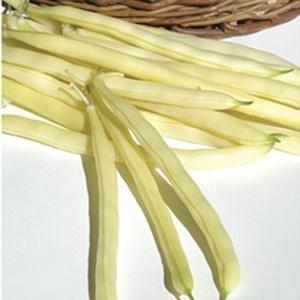
A compact bush sugar bean variety 30-40 cm high, reaches technical maturity in 45-50 days.
The beans are pale yellow, without fibers, the pods are 11-13 cm long.
The variety is drought and disease resistant, it has stable fruiting.
Sachs 615
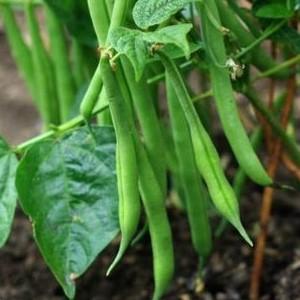
A bush variety of asparagus beans, bred in the USSR back in the 40s of the last century. Fruiting begins 45-50 days after planting.
Fruits are light green in color, 9–12 cm long, slightly curved, tender and crunchy.
The variety is valued for its yield, which is achieved by the formation of ovaries in clusters of 6-10 pods. The plant is resistant to diseases typical for the culture.
Bona's asparagus beans
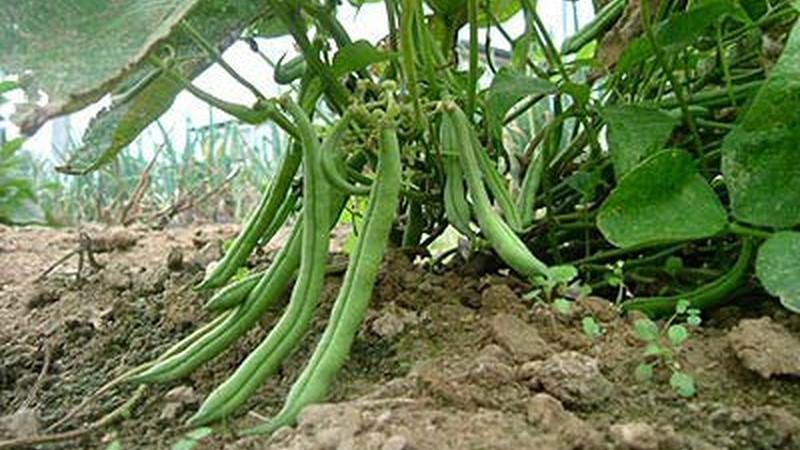
The bush variety of sugar beans stands out for its compactness - its height is only 30-40 cm. Glossy cylindrical pods of light green color, 12-15 cm in length, curved at the end, are harvested 50-60 days after planting.
The plant forms ovaries in clusters of 4–6 pods, resistant to diseases typical of the culture, and stable in fruiting. The variety was bred in Poland and is recommended for cultivation in the Central region.
Crane
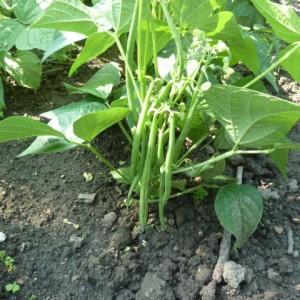
A bush type of sugar beans 40-52 cm high, white flowers.
The plant is thermophilic, planting in open ground at a temperature of 18 degrees, the period from germination to technical maturity is 50-55 days.
Smooth green pods cylindrical, slightly curved, 11-13 cm long, delicate in taste.
The yield is average. The variety is resistant to bacteriosis.
Vigna Liana green beans
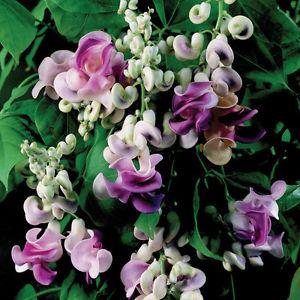
All cowpeas are commonly called lianas. Caracalla (Latin Vigna caracalla or Latin Cochliasanthus caracalla) is one of the brightest representatives of lianas, this plant twists 7 m in length.
A distinctive feature is the unique snail flowers of all kinds of colors. Any vertical surfaces are decorated with the plant, pruning shoots if necessary.
Vigna Countess
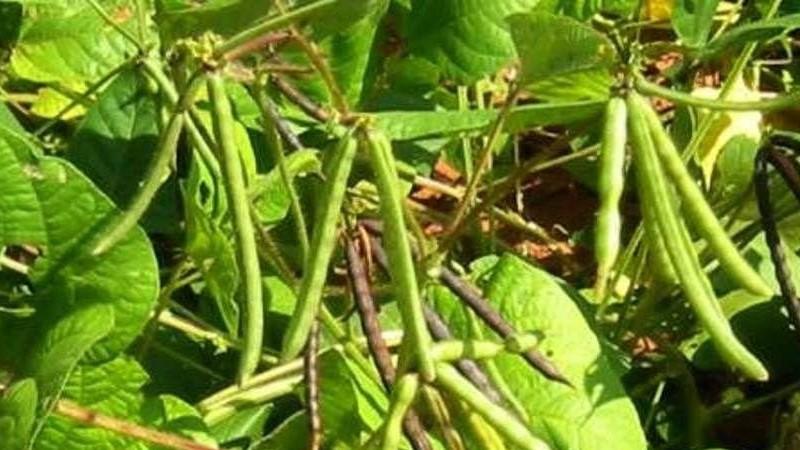
Vigna Countess, climbing and branching plant, up to 3 m long, technical ripeness occurs 55-60 days after full germination.
Fruits in long, up to 80 cm, straight green pods, juicy and crunchy. Fruit weight per plant with abundant fruiting exceeds 5 kg. The variety is adapted to cool climatic conditions.
reference... The black oval grains of this cowpea are otherwise called black beans.
Photo and description of the variety of green beans Vigna Macaretti
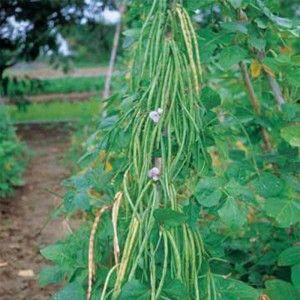
Curly variety, also less thermophilic than other cowpeas, up to 3.5 m long.
Technical ripeness occurs 60-65 days after full germination.
Pods 30-35 cm long, green, juicy and tender, from 2 to 5 in one brush.
The grains are light brown.
Asparagus Yardlong Classic Wign Bean

Curly variety of thermophilic cowpea, up to 3-5 m long, is planted at a temperature of 18 degrees.
The pods are tied in bunches of 5-6 pieces and grow up to 50 cm in length. They are green and purple and can be eaten 60-75 days after planting.
Dolichos (hyacinth bean, curly lilac)
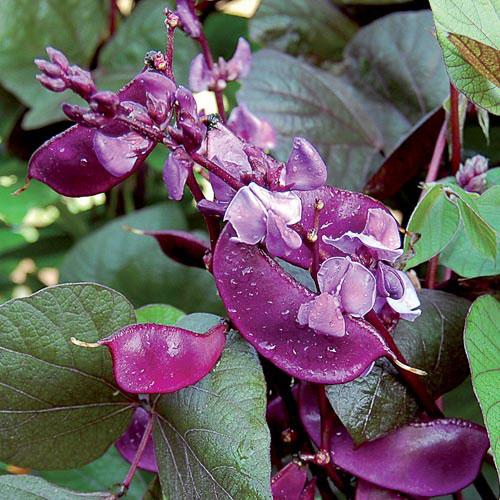
Perennial climbing plant, the closest relative of the cowpea, but is cultivated only for decorative purposes.
Length 3-4 m, dark green leaves, blooms profusely throughout the season. Broad and flat pods, sometimes growing to large sizes, are inedible.
Fire Red Curly Beans (Turkish Beans, Winner)

Ornamental beans (Latin Phaseolus coccineus) have different names: the climbing variety is called Fiery Red, and the bush variety is called Winner, blooming continuously from June to September.
Inflorescences are racemose, white or bright red. An annual plant, thermophilic, drought-resistant, cultivated as an ornamental and green manure.
The wide and large pods of this plant can be used for food, but due to the thick parchment layer, they are eaten only during the period of milk ripeness.
Curly beans Spanish white
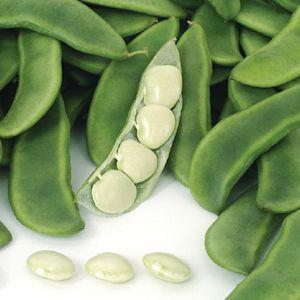
The plant is a relative of Russian beans. It attracts attention with large beans, which turn white when fully ripe and grow up to 25 mm in diameter, 5-6 times the weight of a common bean grain.
They eat unripe and ripe grains.
The plant belongs to curly, 3-4 m in length, blooms profusely with large white inflorescences, technical ripeness - 72-75 days after mass shoots.
Bluhilda: Vegetable Curly Beans
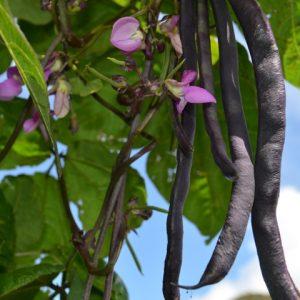
This curly variety of semi-sugar beans, reaches a length of 3 m and stands out for the intense purple color of pods 15-23 cm long with white grains. The finished taste is oily, rich.
The beginning of fruiting 50-70 days after mass shoots. The pods are collected constantly so that they do not overripe and do not interfere with tying new ones. Prefers sandy and loamy, well-warmed and moderately moist soils.
Curly beans Harmony
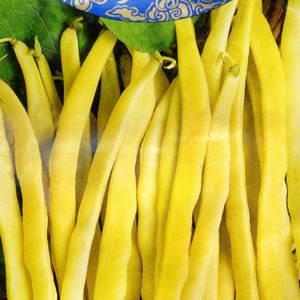
A universal climbing variety of semi-sugar beans, 3-4 m long. Blooms 50 days after planting. The flowers are white-yellow.
Technical maturity in 65-80 days, pods are yellow, uneven, 20-25 cm long, without coarse fiber.
The grains are white. For culinary purposes, it is recommended to use unripe pods.
Fully ripens 90-100 days after planting. The variety is resistant to diseases and pests.
Curly beans Violet
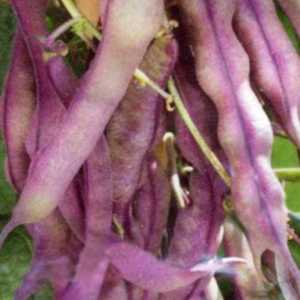
Curly beans, 2-3 m long. The pods change color from green to pale lilac during ripening. The grains are deep purple.
They reach technical maturity in 70-85 days, full - 100-120 days after planting. Only grains are eaten.
Green Giant Curly Beans

A curly variety of semi-sugar beans, reaching 3 m in length.
The flowers are small, the color of the petals varies from pale lilac to bright purple.
Fruiting 55 days after planting.
The pods are large, 20–22 cm long, tender and juicy at the stage of milk ripeness.
Enchantress - black beans inside white pods
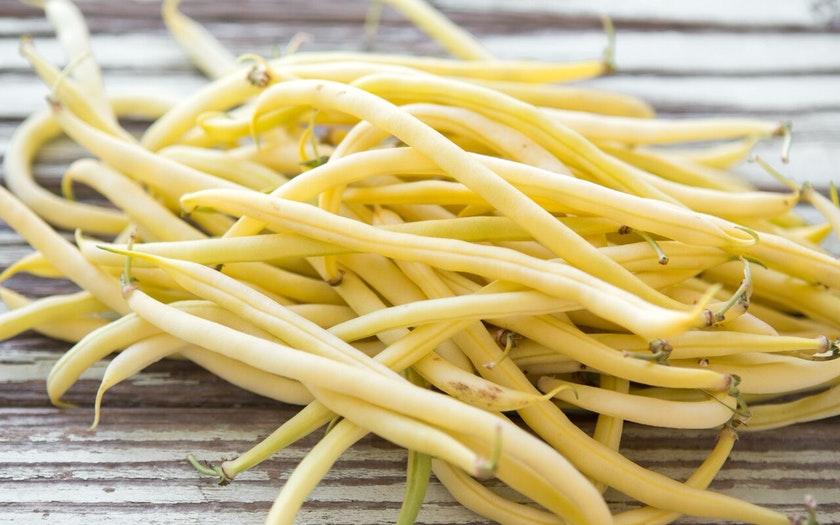
Semi-sugar bush beans begin to bear fruit in 35-40 days. Pale yellow pods without parchment walls with black grains inside.
Full ripening period is 55-60 days. The plant is resistant to adverse climatic conditions and various types of diseases.
Curly beans Borlotto

Grain variety of common curly beans, reaches 3-3.5 m in length, fruits 12-14 cm long, 6-8 grains per pod.
Upon reaching technical maturity in 55-60 days, the pods of this variety change color from green to spotted beige-pink, after which they can be eaten.
Attention! They eat only Borlotto beans. They are cooked for at least 40 minutes. After boiling, they have a pleasant nutty flavor.
Fully ripe 80-120 days after planting.
Flamingo: A variety of green beans with variegated beans

The Flamingo variety is a bush version of Borlotto, up to 60 cm high.
Reaches technical ripeness 55-60 days after germination.
Pods and grains in bright pink streaks, 50-60 pieces per plant.
Conclusion
Legumes provide a wide range of choices for garden experiments and rarely disappoint. One has only to pay attention to the conditions necessary for a culture to survive.
The article briefly describes the varieties of beans, many of which are bred for growing in cool climates. Others, due to their productive or decorative features, will attract everyone, without exception, regardless of weather conditions.